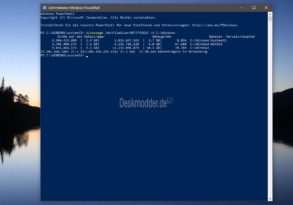

They’d enter the name of their Site and a date from which to ‘trim’ (ie delete) files. Staff would run it when their Teams/SPO Site needed some ‘housekeeping’.


Maybe a quicker option would be to create a single window ‘staff-friendly’ TreeSize-Lite. That’s quite hard/impossible to do for staff at the moment without involving the IT Dept, and for me to complete this for them I’d need to use a PowerShell script.Īs I mentioned previously, staff self-service is a central theme for us with the now highly distributed and ‘MS Teams-loving’ workforce, staff expect to be able to resolve simple issues without involving IT and why not ? Staff could adjust the date until the space savings met their need, then click ‘Commit’. If they chose May 2020 for example, the SpaceObserer interface would indicate the space saving if matching files were deleted. So staff Site Owners would : ‘…enter the name of their Site and a date from which to ‘trim’ (ie delete) files from the Recycle Bin + file versions held across :- 1) the site 2) a Document Library and/or 3) a given folder. I think the key here is not about informing staff what the position is….rather giving staff a SIMPLE single interface from which to TAKE ACTION (eg via a SpaceObserer web page). I’m informed by a colleague that Teams allows custom tabs and extensions using open web technologies eg Node.js, TypeScript and React, which means nothing to me ! Perhaps you could also include a form to request more space on the TreeSize tab ? TreeSize could automatically assign it on the first request, then require an authorisation code (issued by IT) thereafter ? Just ideas 😊 This should allow staff to ‘self-serve’ by using the TreeSize data and keep their site ‘healthy’ and operating within its Quota. That puts key TreeSize/Site info right in front of staff….which we find very difficult to do at the moment. Get-childitem -r $_.Hello, would it be possible for you to code a TreeSize Tab that we could add to our MS Teams Sites ? At present Team ‘Owners’ can see the size of the underlying ‘SharePoint’ files by using the ‘Manage Team / Analytics’ tab and that’s it….unless they open the Team in SharePoint Online and know where to look.Ī TreeSize Tab in Teams could present the ‘Top 100’ files (inc Version sizes), largest folder (GB), size/ability to selectively empty the Recycle Bin, overall Quota used and perhaps also present a ‘History’ graph of Growth by month. To do the same with du from what I can find, needs something like find. The image below shows a comparison against this function and a normal du output, though to expand the function (it was actually part of a script) I added a simple where-object to match against some regex. This function took around 4 hours to ‘scan’ a network share which was over 4TB and around 20 million files, TreeSize beat this function by about 10 minutes.Ī quick google shows a heap of people have come up with basically the same thing. I wanted something as fast as possible while still being light weight. In my more recent IT life, the tool of choice is TreeSize however not every client has a license or has the app installed on their various servers. In a previous IT life I was performing junior linux admin duties where I found du -h -max-depth=1 to be very handy when tracking down whatever happened to be causing those pesky disk space alerts we all hate.


 0 kommentar(er)
0 kommentar(er)
